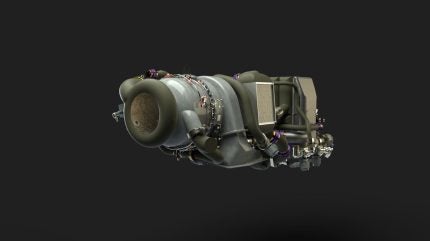
US-based RTX’s Collins Aerospace has successfully completed testing of its enhanced power and cooling system (EPACS), a next-generation power and thermal management system (PTMS).
The system is intended to supersede the existing PTMS on the F-35 Lightning II joint strike fighter.
It is designed to offer over twice the current cooling capacity to accommodate the aircraft’s planned upgrades throughout its operational lifespan.
The Government Accountability Office (GAO) has reported that the current PTMS of the F-35 is being pushed beyond its intended capacity. This system is responsible for dissipating heat from various aircraft components.
Due to this overextension, the aircraft’s engine is being forced to function outside its designed limits, which has led to increased wear and tear. Consequently, this has resulted in a significant rise in the projected expenses over the duration of the programme, the GAO stated.
In response to GAO statement, Honeywell Aerospace told Airforce Technology: “The aircraft engine’s bleed air specification was not aligned with the air vehicle bleed air specification, which caused the engine to operate outside of the engines design specification. The JPO is now addressing the misalignment of bleed air requirements by funding RTX to develop the F-135 Engine Core Upgrade (ECU) to increase engine life.”
Following the 2024 announcement of EPACS demonstrating 80 kilowatts (kW) of cooling capacity, Collins Aerospace has continued to invest in advanced thermal systems development laboratories.
These facilities have enabled engineers to replicate combat aircraft conditions accurately, ensuring the EPACS system’s performance is rigorously validated across various environmental parameters.
Collins Aerospace power and controls president Henry Brooks said: “As the F-35 is modernised with advanced weapons and mission equipment, increased cooling will be required to dissipate all the heat these new systems will generate.
“EPACS can deliver that cooling and with our successful demonstrator test, we stand ready to begin the integration process with Lockheed Martin and help service members meet their urgent mission requirements.”
The EPACS demonstrator has achieved Technology Readiness Level 6, having been tested under different temperatures, pressures, airflow rates, and humidity levels.
This level of technological maturity is often a prerequisite for customers before proceeding to the engineering and manufacturing development phase.
The next step for EPACS would be to enter a competition for replacing the current F-35 PTMS, with the selection of a winning solution.
As a dual-use technology, the EPACS can also be integrated into a wide array of future military and commercial aircraft, including sixth-generation fighters and passenger planes.
With modern aircraft integrating increasingly power-intensive technologies, advanced thermal management solutions such as EPACS are expected to play a critical role in future aviation, Collins said.



